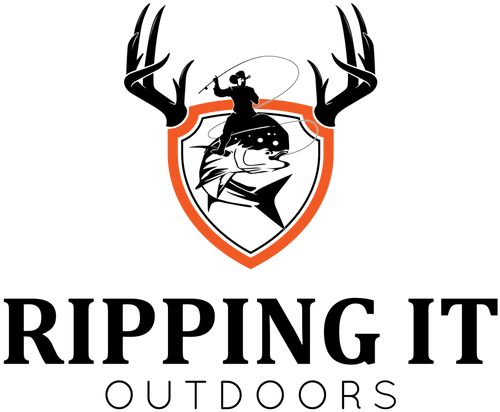Essential Tools for Land Management: A Guide to Mulchers, Brush Cutters, Firminators, Smooth Rollers, and Silt Fence Plows
Effective land management requires specialized tools to tackle various tasks, from clearing vegetation to preparing the ground for planting. This article explores five essential pieces of equipment: Mulchers, Brush Cutters, Firminators, Smooth Rollers, and Silt Fence Plows. Each tool serves a unique purpose and can significantly impact the efficiency and outcome of land management projects.
Mulchers: Clearing and Shaping Landscapes
Mulchers are powerful machines designed to decompose large vegetation and debris into mulch. This process helps in clearing the land and contributes to soil health and erosion control.
Types of Mulchers
- Disc Mulchers: Equipped with a heavy-duty disc and sharp blades, these mulchers are ideal for clearing dense brush and small trees. They are versatile and can handle various types of vegetation.
- Drum Mulchers: Featuring a rotating drum with heavy-duty knives, drum mulchers are effective for larger-scale clearing and land preparation. They provide a finer mulch and are suitable for diverse terrain.
Benefits
- Efficient Clearing: Mulchers can quickly clear large areas of unwanted vegetation, saving time compared to manual methods.
- Soil Health: The mulch helps retain soil moisture, suppress weeds, and add organic matter.
- Erosion Control: These tools reduce erosion and improve soil stability by covering the soil with mulch.
Brush Cutters: Precision Cutting and Trimming
Brush Cutters are essential for maintaining and managing overgrown areas, particularly in settings where precision and control are necessary.
Types of Brush Cutters
- String Trimmers: Ideal for light to medium vegetation, string trimmers use a rotating string to cut grass and small brush. They are perfect for areas with delicate plants and precise trimming needs.
- Blade Brush Cutters: These cutters use sharp blades to handle more rigid vegetation, including thick brush and small saplings. They are robust and suitable for heavy-duty cleaning tasks.
Benefits
- Versatility: Brush cutters can handle various vegetation types, from thin grass to thick brush.
- Precision: They offer control and accuracy, which is ideal for maintaining landscaped areas and around obstacles.
- Ease of Use: Many models are lightweight and ergonomically designed, reducing operator fatigue.
Firminator: Advanced Seedbed Preparation
The Firminator is a specialized equipment used for seedbed preparation and planting. It combines several functions into one machine, streamlining the process of preparing the land and planting seeds.
Features and Functions
- Tilling: The Firminator tills the soil to create an ideal seedbed, breaking up compacted soil and removing debris.
- Seeding: Equipped with a seeding mechanism, the Firminator plants seeds at the correct depth and spacing for optimal growth.
- Cultipacking: Many Firminator models include options for 9” & 16” cultipackers to ensure that seeds have the necessary compacted seed to soil contact for maximum germination.
Benefits
- Efficiency: The Firminator’s ability to perform multiple tasks saves time and reduces the need for additional equipment.
- Uniform Seed Placement: Ensures consistent seeding depth and spacing, improving crop yields.
- Soil Preparation: Prepares the soil effectively for planting, enhancing seed-to-soil contact and promoting germination.
Smooth Roller: Leveling and Compaction
A Smooth Roller is a vital tool for leveling and compacting soil, which is crucial for creating stable and even surfaces for various applications, such as landscaping and construction.
Types of Smooth Rollers
- Single Drum Rollers: Equipped with a large, heavy drum, these rollers effectively compact soil and create a smooth surface.
- Double Drum Rollers: Featuring two drums, one at the front and one at the rear, double drum rollers provide increased stability and compaction force.
Benefits
- Surface Smoothness: Smooth rollers create an even surface, which is essential for paving, seeding, and other applications requiring a flat area.
- Soil Compaction: Compact soil effectively increases density and stability, reducing settling and shifting risks.
- Versatility: Suitable for various projects, including road construction, landscaping, and turf preparation.
Silt Fence Plow: Erosion Control and Sediment Management
The Silt Fence Plow is designed to install silt fences, critical for controlling erosion and managing sediment on construction sites and other disturbed areas.
Features and Functions
- Fence Installation: The silt fence plow quickly and efficiently installs silt fences by plowing a trench and securing the wall.
- Sediment Control: The installed silt fence captures sediment and runoff, preventing soil erosion and protecting water quality.
Benefits
- Erosion Prevention: Effective in controlling soil erosion and preventing sediment from entering water bodies.
- Quick Installation: Speeds up the installation process, allowing for efficient project management.
- Regulatory Compliance: Helps meet environmental regulations and best practices for erosion control on construction sites.
Conclusion
Each tool—Mulchers, Brush Cutters, Firminators, Smooth Roller, and Silt Fence Plows—plays a crucial role in land management and preparation. By understanding their functions and benefits, land managers can select the right equipment for their needs, improve efficiency, and achieve better project results. Whether clearing vegetation, preparing seedbeds, leveling surfaces, or controlling erosion, these tools are indispensable for maintaining and enhancing land and soil health.
